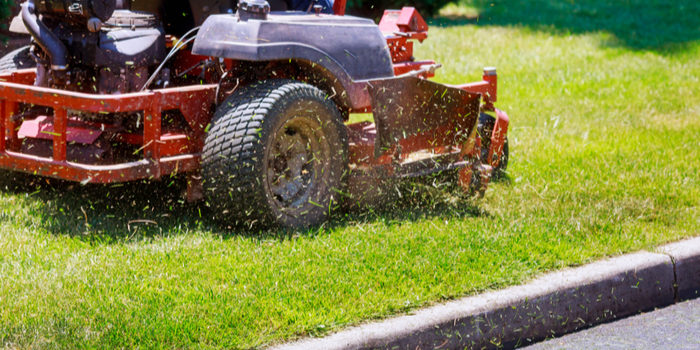


Everyone wants the best-looking yard on the block. However, it can be quite difficult to maintain a healthy and plush lawn through the harsh summer months. If you’re looking to keep up a good lawn care regiment and keep your grass looking verdant and perfect, you’re going to want to take some of our summer lawn care tips to heart. Here’s what you need to know.
Summer Lawn Care Tips
Know What to Expect
When the hot summer temperatures show up, it’s time to adjust your expectations of your grass. It’ll grow thick and plush in the Springtime, as even cool-climate grasses love temperatures in the 60’s. That includes grasses like bluegrass and rye. Meanwhile, hot-temperature grasses, like Bermuda and St. Augustine, prefer to grow in the 70’s. Once the temperature jumps above 80 degrees, however, it’s time to expect your grass’s growth to slow and stop.
Now, you can use techniques like fertilizer and sprinkler systems to make sure your grass gets plenty of coaxing and will want to grow taller. However, know you’re fighting nature when you try to encourage grass growth in the summertime. On top of this, you’re likely using your grass more in the summer time, having friends over, throwing barbecues and parties, and trampling all over your grass. This is a surefire way to see your grass turn brown, dry up and go dormant.
Proper Watering
As you might expect, proper watering is a huge aspect of good summer lawn maintenance. If your grass isn’t getting enough water from rainfall, you need to make up that difference yourself. Your grass needs about an inch of water per week, so use a rain gauge to keep up with how much your yard is getting. Make up the difference with your sprinkler system or just by hand-watering your lawn. Make sure you water in the morning to avoid fungal growth and evaporation.
When you get into watering your lawn for the summer, make sure you’re in a regular groove. Water the grass regularly and deeply to encourage drought-resistant roots. Also, if you’re not going to water the lawn regularly, don’t water it at all. If the grass goes brown and dormant, don’t try to water it back into being green. Your lawn will bounce back in the fall if it falls dormant, so just let it lie if it does.
Mowing Your Grass
Raise your mower blade in the summer to avoid damaging your grass. Taller grass is more drought-resistant, with deeper roots and hardier constitution. It also keeps the ground well-shaded, preventing the growth of low-lying weeds. Warm season grasses need to be about two or three inches in the summer, while cooler season grasses need to be between three and four inches.
Make sure you also mow regularly in the summertime. You don’t want to cut more than a third of the length of a blade of grass, to encourage your lawn’s health. Another important factor is the amount of grass clippings, which could smother your lawn if they fall too densely over your grass. Finally, you’ll want to make sure your mower blades are kept razor-sharp in the summer. If they aren’t, they won’t be cutting your grass, they’ll be tearing your grass. That’s terrible for your lawn’s health.
Fertilizer
Use fertilizer sparingly. You don’t need to use fertilizer on brown, flagging lawns. If you do, you’ll only burn the grass out and encourage fresh growths that will just die to the heat. Instead, wait until the fall when your grass is green again to fertilize. Yes, this does mean that your grass will just look bad throughout the summer, but it’ll save you money on dropping fertilizer for no reason.










